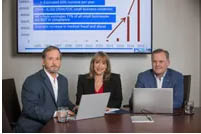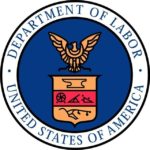I am not an attorney or epidemiologist; I am not an expert here – this is all my educated opinion. My advice up until yesterday was pretty clear but every hour the insanity increases, and the advice gets more blurred. I will try to tell you what we KNOW, think we know and when that isn’t clear what my gut says.
First, the world just cannot stop for 3-6 months like some propose. The economy will crash and society will erupt in chaos. My best friend owns pawn shops and they are TOTALLY sold out of all guns – people are preparing for the worst out of mankind. When the worst happens part of society act like the benevolent humans as we should and part resort to their lowest form. Crime has already started escalating in Dallas – I believe it is the tip of the iceberg. So just not sure what is coming of all this but we should all take a hefty dose of humanity and common sense every morning, if not twice or three times a day.
Next, quarantine is an effective way to diminish the impact of an epidemic virus – has worked for thousands of years. The word is derived from Italian meaning “forty days” which is how long they would keep ships at dock before unloading them to stop the plagues of old. Maybe Italy forgot that. I think the shooter risk term “shelter in place” is more applicable here (just applied in California) – people in general may decide to stay home except for essential functions. Problem is shelter in place just means stay home except for what each individual considers essential and even at that I doubt society will stand for it for long – it appears they already are not. As of the last two days, the virus activity in the US has escalated but almost 60% from activity in New York. Although too many, only 217 in US have died from COVID-19 this year (as of 10:11 CST 3/20/2020 – see www.worldometer.com). As I write this, since 12:00 this morning there have been 10 more reported deaths in US from COVID-19. By comparison there have been 315 from the regular flu, 3,200 from complications of cigarette smoking, 5,400 from cancer and 710 from suicide. I try to remain not totally cynical but what is going on is a bit baffling.
No Federal or State ruling has mandated health care close its doors, only recommending health care providers consider providing essential services of their business. Each owner/provider has to decide what that means to them. Many question how effective everyone closing their doors for two weeks will it be. Some I guess. Reality is we are likely to see more cases than less over the next two weeks. Then what? Also there are documented cases of longer that 1-14 day incubation period but those are obviously outliers. Healthcare has essential and non-essential components to it and I believe the essential components must continue. Right now, government has left the decision of what constitutes essential vs non-essential components to each of you. So you get to decide. So my first operational comment would be anyone’s decision to close their practice completely is certainly one option. Personally, I think until pushed more into isolation/quarantine, staying open but restricting to essential care elements is reasonable.
If you decide to stay open, the following would be reasonable things to do.
- Significantly increase sanitation efforts in the office, which everyone has likely already done. Disinfect after all encounters.
- You are taking precautions, make your customers/patients do the same. Nothing wrong with screening their temperature before entering your facility and certainly nothing wrong with making them wash their hands upon entry. Handwashing is very effective and you are likely to eventually run out of sanitizers without rationed use.
- Triage better – make sure you are asking the patient why they need to come in to determine the element of “essential”.
- Do not let sick people in your office – period. If they are sick and have a serious enough ocular emergency that they must be seen, send them to the hospital. Too many are trying to play emergency room. We are not equipped to deal with high risk individuals – period.
- Deliver glasses and contact lenses to their cars or offer to mail them. Adjusting glasses doesn’t seem essential and poses a high contact situation.
- Limit your schedule – try to keep to a minimal the number of patients in the office for professional care at one time. I heard one recommendation of one patient an hour – exam and whatever optical needs can be easily managed in that time frame. Likely you can do more.
- Ask patients to not bring family and friends with them to the office. Limit scheduling of more than one member of a family at the same time.
- Have people wait outside – call them in through their cell phones like restaurants do when your table is ready.
- Other than the elements of care that do not allow it, practice social distancing. This also includes things like not talking to patients behind the slit lamp, overall limiting the amount of discussions to essential elements.
- Glove up – transmission is predominately fomite. Gloves are likely far more effective in limiting transmission than masks. Gloves are likely in shortage from traditional sources – look in hardware stores.
- Don’t worry so much about contact lenses right now. Extend Rxs generously.
- If glasses are needed have opticians limit number of try ons – don’t let people roam the optical and handle everything. Have patient select only the ones they are REALLY interested in because you need to clean all the ones they try on. And a point – glasses can certainly be essential for people or lose them or whatever and cannot function without them.
- Consider limiting hours of operation and reducing number of staff in the office at the same time – NOT with a goal of cramming more patients into a tighter schedule but to enhance social distancing.
- Alternate staff “teams”. This decreases everyone’s hours but also decreases exposure potentials.
- Give people the choice. You can tell them your office has gone over and above recommended precautions and if people want to be seen it’s their choice. People who are assuring patients they are taking all reasonable precautions are finding a good number of people want to be seen. Anyone that shows up can be screened. Simply seeing if they have a fever is an effective screening metric. We know they have the virus and CAN spread it before onset of fever or any symptoms, but the risk of transmission is way higher once signs and symptoms set in.
- Do consider significantly limiting care to at risk populations…which is definitely anyone over 80 and somewhat anyone over 60.
While you’re at it, screen your staff every day.
Which brings us to next issue, staff. Here are some general pointers
- Your employees have a right to say they do not want to increase their exposure and want to stay home. In most cases this is job abandonment, but I think in this case honoring their request and welcoming them back when this passes is rational human behavior. This does NOT entitle them to any special benefits even under the new provisions of HR 6021.
- You have no obligation to guarantee work to non-exempt (hourly) employees. In economic or other downturn situation, you can simply cut hours of non-exempt workers or temporarily lay them off.
- If you didn’t listen to my preaching and have people on salary, you have to pay them, fire them or come to some mutual agreement with them. You cannot cut their pay.
- Many are trying to find ways to help their employees by paying them something even if they close but you have no obligation to do so. It is a balance between keeping the business viable and helping people that each individual doctor must make. In situations like this, the bottom line is everyone shares in the suffering.
- If they are laid off or their hours significantly cut, they have every right to file for unemployment benefits and they should. The parameters for these benefits are state specific. The increase in premiums to you will be minimal.
Congress did pass emergency legislation (HR 6021) that allows for additional benefits to employees in this crisis. Eligibility for these benefits is restricted to issues related to the COVID-19 crisis. The acts do not take effect until April 2 and there are many areas of the acts that hopefully will be clarified by the Secretary of Labor before that time. There are three main elements related to most of you.
- Funding was significant increased for operations and benefits under the unemployment benefit program. Funding will be provided only to states that meet certain requirements. Employees who are laid off are definitely eligible for this benefit. Employees who have their hours reduced are also eligible – how much reduced and for how long are typically state specific rules each affected employee will have to deal with. Application and processing rules for these benefits are likely to be significantly reduced. Employers need to take no additional or different action related to these changes.
- An extension to the Family Medical Leave Act allows for fourteen (14) weeks of paid leave if the employee has to leave work in order to take care of a child due to the fact their child care is not possible – school is closed or paid child care not available. This is paid out by a complex benefit table with caps based on employee’s wages (capped at $200 per day with a $10,000 aggregate). Employer expenses related to this benefit will be considered as a tax credit. Details on the way the tax credit will work should be further defined by April 2. Specific to the FMLA extension benefit, this extension only applies to the specified childcare reason and not just because you have to lessen an employee’s hours due to the economic turndown. Employers may also exclude employed doctors from this benefit.
- A second benefit is a ten (10) day paid sick leave benefit for employees for any one of the following reasons:
- Employee is ordered by federal or state order or directed by a physician to isolate or quarantine
- Employee is symptomatic and seeking a diagnosis from a physician
- Employee who needs time to care for a child due to closure of school or loss of access to paid childcare
- Any other similar situation related to the corona crisis – not yet fully defined
Payment of this benefit must be at a rate that is at least two-thirds of their usual hourly wage with a cap of $200 per day and a $2,000 aggregate.
There is a stated ability for the Department of Labor to exempt all healthcare providers and/or small business (less than 50 employees) where the employer feels providing these benefits would jeopardize the viability of their business. There is also debate as to whether these benefits are on top of any paid time off you offer or if you may substitute existing sick, vacation and/or PTO benefits related to the FMLA benefit but it is clear you cannot mandate substituting your paid leave benefits for the Sick Pay Leave benefits. There are also still questions regarding how the actions you take regarding your employees prior to enactment of the law – April 2. Exactly how this will work out is yet to be seen but remember these benefits have application limited to the COVID-19 crisis. The point is the choice of how you handle your employees is mostly still in your hands. Whatever you do, remember these actions can be a dangerous precedent and it must be clear the action is totally restricted to the current COVID-19 situation.
If you do stay open, obviously look at every single way possible to reduce costs. You can also use the down time to clean up, fix up and organize – a need I see in many offices.
So, problem is there is no right answer for each and every question I am being asked. I am in continuous consultation with our attorney consultants and will update as things change or become clearer. But I know each of you are a very smart and reasonable people. You will decide what is right for you, your clients/patients and employees.




